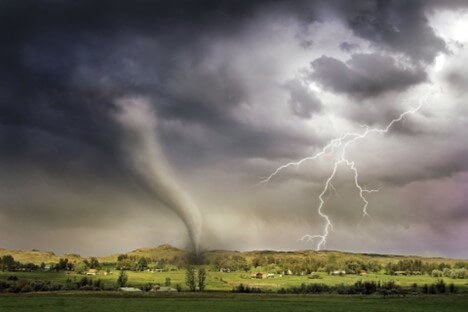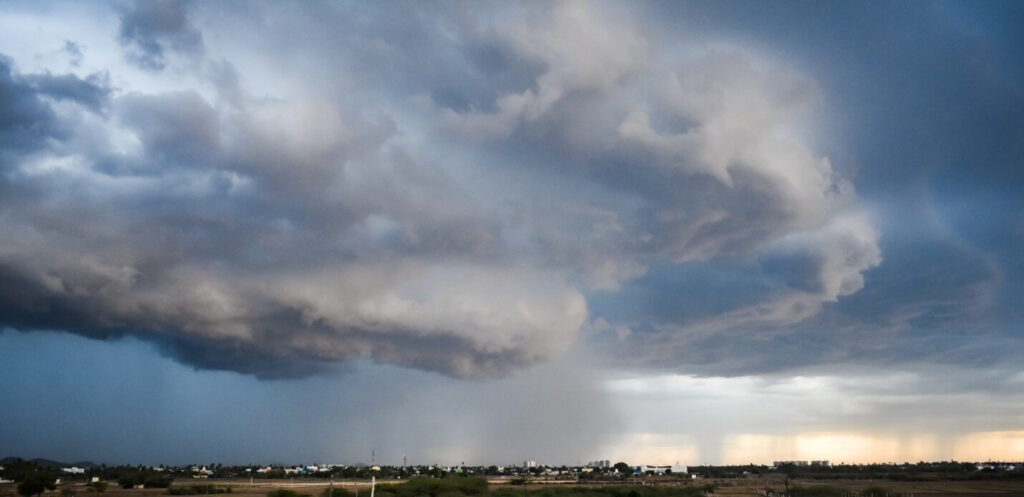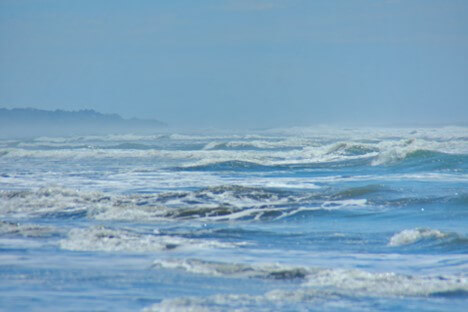Meteorologists and weather enthusiasts alike may be perplexed by the complex vocabulary used to characterize different atmospheric phenomena. Every meteorological term, from the enthralling Pineapple Express to the terrifying Bomb Cyclones, reveals a different aspect of the planet’s changing climate. This article explores the phenomena of atmospheric rivers, bomb cyclones, supercell thundersnow, Pineapple Express, and erratic Chinook winds, explaining their significance and implications.
Nor’easters

Nor’easters are storms with powerful intensity capable of causing havoc in areas where it occurs. This strong winds can be in the form of gale-force winds and can turn into hurricanes. They usually comes from the Northeast and reach the east coast of North America. The timing of a Nor’easter can be anywhere from September to April. During a Nor’easter, there is a high chance of precipitation in the form of snows. In addition, the drop in the temperature can even lead to blizzards which is very common. Since this storm occurs in coastal areas, there is a significant chance of flooding. As a result, there is a high probability of damage to property near the coastline.
Atmospheric Rivers
According to the National Oceanic and Atmospheric Administration (NOAA), atmospheric rivers are the small atmospheric channels that carry significant amounts of moisture from the tropics to higher latitudes. These rivers have a significant impact on flood risks and water availability as part of the Earth’s water cycle. While some atmospheric rivers have the potential to trigger dangerous weather, many others just wander the world with little to no impact. For the purpose of managing water resources and forecasting possible weather extremes, it is imperative to understand these dynamic channels.
Supercell Thundersnow

A thunderstorm with a rotating updraft that exhibits strong and well-organized storm characteristics is referred to as a supercell thundersnow. These storms have been studied for decades due to their longevity and capacity to produce hail and tornadoes. Around 1999, the term “supercell” became widely used in meteorological discussions. Supercells are regarded as a basic component of meteorology. A greater understanding of supercell thundersnow contributes to improved forecasting and readiness for severe weather occurrences.
Pineapple Express

The Pineapple Express is a term used for a strong atmospheric river near the Hawaii region. When it reaches the West Coasts of the United States and Canada, this small area of moisture, which is a part of the global atmospheric air “conveyor belt,” has the potential to produce significant amounts of snow and rain. Warm tropical water vapor carried by dominant winds across the Pacific form a river that can bring California up to five inches of rain in a single day. For coastal regions, knowing the Pineapple Express is essential because it greatly influences their weather patterns.
Bomb Cyclones

The term “bomb cyclone” is storm that has an explosive type effect. It was first used in a 1980 paper that highlighted and describes the intense growth of a cyclone. Although meteorologists have long studied this phenomenon, the term gained greater traction in the public discourse in the late 2010s. Severe weather conditions can be caused by these storms, which are also referred to as bombogenesis. Recent occurrences, like the storm that struck California, highlight how important it is to identify and comprehend bomb cyclones for effective weather monitoring and public safety.
Chinook

Chinook winds are a type of weather that occurs in the northwest of North America and is named after the Chinook Native Americans. When warm, humid air from the Pacific Ocean approaches the Rocky Mountains, these winds are created. Rain or snow is caused by the moisture released by the rising and cooling air over the mountains. The dry air rapidly descends on the eastern side of the mountains, warming and becoming drier than the initial air mass. Chinook winds can have a variety of effects, such as melting snow or causing abrupt temperature changes that affect plants and animals that are hibernating.
Conclusion
In the world of meteorology, these terms or phenomenon are some of the most interesting ones. There are many other meteorological terms that can also be added to this list. However, when it comes to weird and wild weather words the terms mentioned in this article are surely near the top.
